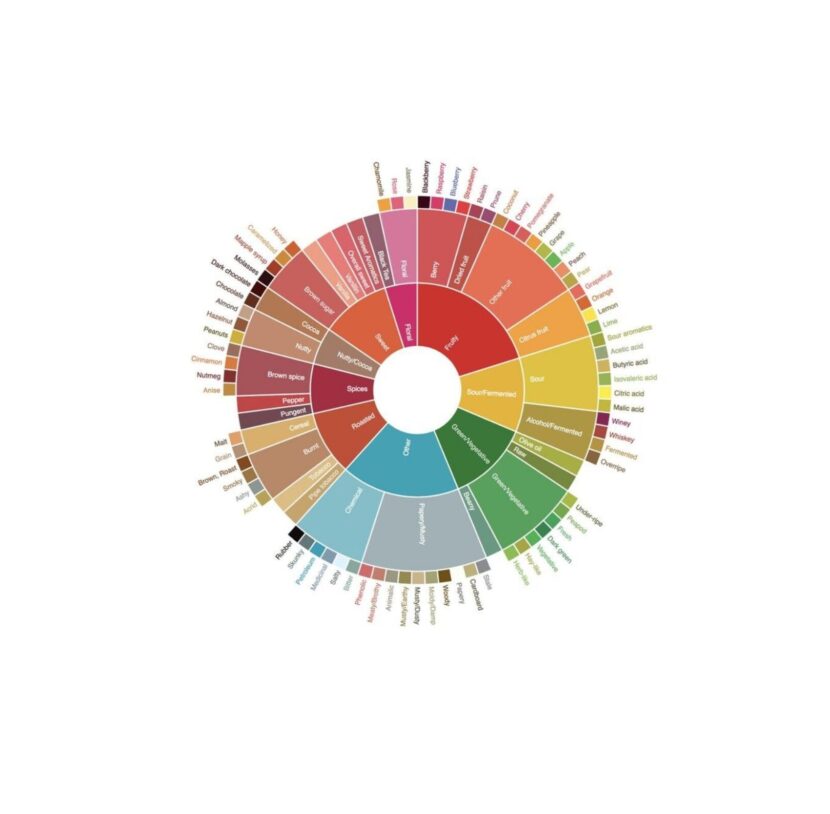Eating raw Chaga isn’t necessarily good for your body. Heating expands the cell walls of the Inonotus obliquus, allowing for more nutrients to become bioavailable and produce a stronger healing potion. This meaning Chaga should be processed before consuming it. Both flavourful and full of medicinal benefits, Chaga has claimed its name the “King of Mushrooms”. The fungus taste is somewhat earthy with a slight bitterness and hints of a sweeter undertone.
I still remember my parents telling me that I’ve gotten old enough to choose and consume foods for their nutritional value, therefore should learn to prioritize that. Even though there have been many sacrifices made by my tastebuds to support my physical health – I can tell you that consuming Chaga has not been one of them.
How does Chaga taste?
Chaga tastes and smells like tree bark–but, and that in a positive way. Once processed, the fungus has beautiful sweet undertones to it. Taste is often a good indicator of the mushrooms’ source and quality.
As we have mentioned before, it’s easy to be fooled by money-hungry suppliers. That is because it’s hard to distinguish the quality of Chaga by looks alone. You need to know what you’re asking for and trust the integrity of your seller if you’ve decided to purchase Chaga.
Things affecting the taste and value of your Chaga
Factor #1: The fungus might have been dead for some time
Chaga will only stay alive and sterile whilst the host tree is living. Meaning that once the birch tree has died, the mushroom has died along with it and will only develop fruiting bodies to start another life cycle.
The optimal time for harvesting the fungus is in spring when the birch sap has started to run. The sap contains dissolved mineral salts and nutrients, which are also absorbed by the fungus and made bioavailable for you upon consumption.
Factor #2: Your stash might be contaminated
Whether you’ve decided to harvest Chaga yourself, bought it locally, or decided to go with a supplier, the most important part of preparing the mushroom is drying it. It’s suggested to cut the harvested Chaga into small chunks, while it’s still moist, often right next to the tree. That’s because once the fungus has been removed from the birch it’ll slowly start to dry out.
The biggest problem with harvested Chaga is mould. There are two most prevalent types, of which the more common is white mould on the Sclerotium – black outer layer and a greenish-blue mould in the inner layer. Both develop with improper processing and storage. Mould and mycotoxins can make Chaga toxic, and taste bitter.
RELATED: How to dry Chaga and stay clear from mold?
To avoid health hazards caused by mould, Chaga needs to be properly dried. The process of drying Chaga isn’t complicated, just make sure not to let the temperature exceed 50 degrees Celsius. Feel free to use a dehydrator or dry them in an oven by keeping the oven door somewhat open for airflow, perhaps you’ll even find a dry, warm, well-ventilated spot to leave the Chaga to dry safely. Experiment with different tools available for you. The drying process generally takes a few days, up to weeks if dried in the sun.
Once your Chaga is dry you want to store it in a cool, dry place, away from direct sunlight. When stored properly, dried Chaga can last for years.
Factor #3: You haven’t found the right Chaga recipe
Raw Chaga itself does no harm nor good for your body, but Chaga tea should be brewed with dried Chaga chunks or powder.
The length of brewing is something we recommend you experiment with, to adjust it to your taste. Just bear in mind the longer you let your tea simmer, the richer the color, taste, and potency of the Chaga fusion. Some people like to let their tea simmer over several days.
Our favorite way to prepare the tea is using around 15 grams of Chaga nuggets in 1 litre of water. Letting it simmer between 50-80 degrees Celsius, for 4 to 5 hours for a beautiful colour and taste. It’s best to keep the temperature low, to ensure keeping alive benefits of the fungi.
chagamushroom.co.uk
If you can’t seem to get yourself liking the flavour of Chaga tea, find different ways to consume it. Nowadays there are countless Chaga products and definitely something for every taste from Chai powders to capsules and potent tinctures.
Also test out different at-home recipes, like adding Chaga to your hot chocolate or enjoying it with milk and honey. Early eastern Slavic populations in Europe used it to treat a variety of internal and external issues. They used the fungi for stomachaches, kidney issues, lung problems, inflammation of the joints, and treating tumors. The most common way to incorporate Chaga into your diet aside from drinking tea was by mixing the powder into broths and stews.
If you’ve ever had kukicha or twig tea, Chaga flavour resonates with them.
RELATED: Chaga tea with Honey and Ginger
USEFUL FACT ABOUT CHAGA!
Chaga chunks or nuggets can be reused around five to six times. Make sure you avoid letting the water come to a boil while the fungus is in it, in order to keep its medicinal value. To reuse your Chaga strain out the Chaga chunks from a batch of tea and leave the nuggets on the side to dry. Once they’re all dried up, store the pieces in a cool, dry, and dark place like a refrigerator.










